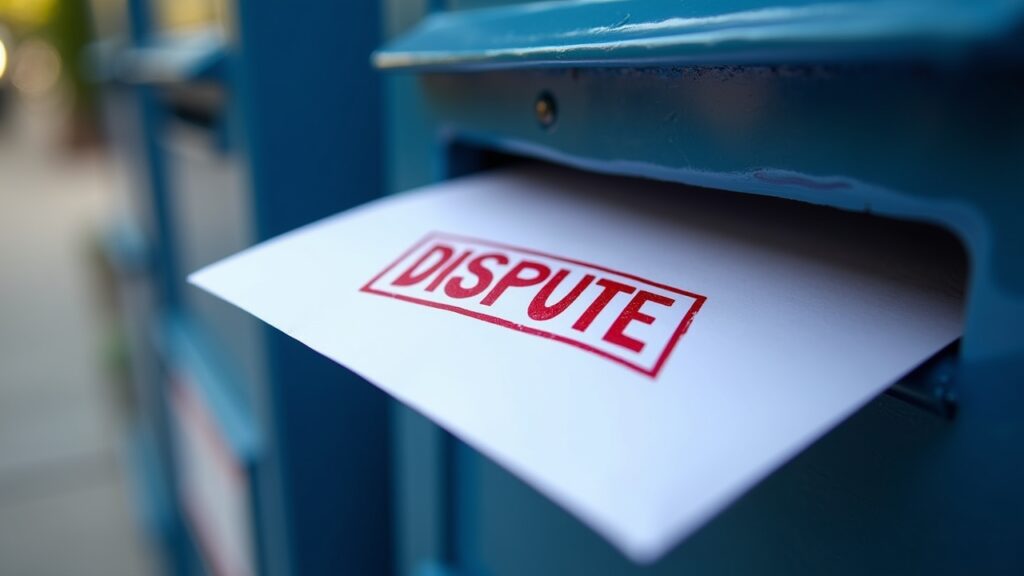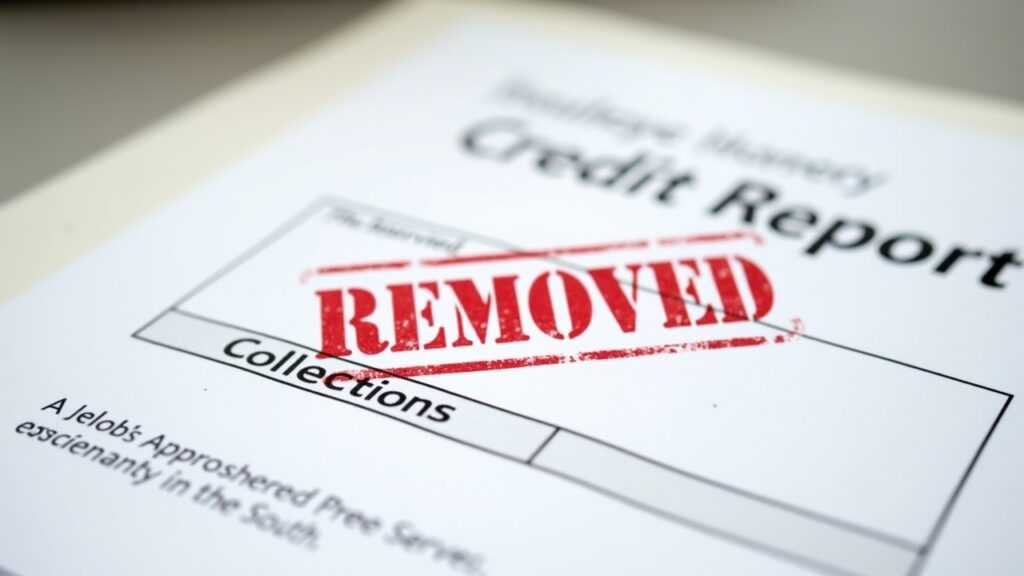Advertisements
Let me tell you, seeing that first collections account on my credit report felt like getting punched in the gut. Furthermore, I’d just applied for a car loan and boom – there it was, this ugly $487 medical bill I’d completely forgotten about from three years ago!
Honestly, collections accounts can tank your credit score by 50-100 points or more. Moreover, they stick around for seven whole years unless you do something about ’em. But here’s the kicker – you can actually get these suckers removed, and I’m gonna show you exactly how I did it.
Understanding Collections Accounts (The Basics Nobody Explains Right)

So basically, a collections account happens when you don’t pay a bill and the original creditor gives up. Then, they either sell your debt to a collection agency or hire one to chase you down. Trust me, these folks are persistent!
When I first learned about this stuff, I was confused about the difference between charge-offs and collections. Essentially, a charge-off is when the original creditor writes off your debt as a loss (usually after 180 days). Meanwhile, collections is what happens next – when they pass it to someone else to collect.
The worst part? Sometimes both the original debt AND the collection account show up on your credit report. Yeah, double whammy!
Your Rights Under the Fair Debt Collection Practices Act
Okay, so here’s where it gets interesting. Consequently, the Fair Debt Collection Practices Act (FDCPA) gives you some serious ammunition. Additionally, collection agencies have to prove the debt is actually yours – and you’d be surprised how often they can’t!
I remember calling a collector once and asking for debt validation. The guy on the phone got all flustered and said he’d “get back to me.” Spoiler alert: he never did, and that collection disappeared from my report 30 days later.
Furthermore, under the Fair Credit Reporting Act, any information on your credit report must be accurate, complete, and verifiable. If it ain’t, it’s gotta go!
The Pay-for-Delete Strategy (My Personal Favorite)
Alright, so pay-for-delete is basically where you offer to pay the collection in exchange for them removing it completely. Now, collection agencies won’t always admit they do this, but trust me – they do it all the time.
Here’s exactly what worked for me:
- First, I called the collection agency and got the name of a supervisor
- Then, I offered to pay 50% of the debt if they’d delete it
- Initially, they said no way, but I kept negotiating
- Eventually, we settled on 70% for complete deletion
- Most importantly, I got everything in writing before paying a dime!
Pro tip: Never, and I mean NEVER, pay without getting that deletion agreement in writing first. Otherwise, you’ll end up with a “paid collection” on your report, which honestly doesn’t help your score much.
Disputing Collections (When They’ve Got It Wrong)
Sometimes collections accounts are just plain wrong. In fact, a Consumer Reports study found that 34% of people have errors on their credit reports!
Subsequently, I found a collection on my report for someone with a similar name. After I disputed it online through each credit bureau’s website, it was gone in about 25 days. However, make sure you keep copies of everything – I learned that the hard way when a removed collection popped back up six months later.
Here’s my dispute process:
- First, get your free credit reports from annualcreditreport.com
- Next, identify any collections that look fishy
- Then, gather any documentation proving it’s not yours
- Additionally, file disputes with all three bureaus online
- Finally, follow up if you don’t hear back in 30 days
Goodwill Letters (Worth a Shot for Paid Collections)
So if you’ve already paid a collection (without negotiating deletion first – oops!), you can try a goodwill letter. Basically, you’re throwing yourself on their mercy and asking pretty please to remove it.
I’ll be honest – this worked for me exactly once out of four tries. Nevertheless, it’s worth attempting because what’s the worst that can happen? They say no?
In my successful goodwill letter, I explained how I was going through a divorce when the debt went to collections. Furthermore, I mentioned that I’d been a good customer for years before that rough patch. Sometimes they actually have a heart!
What About Those Credit Repair Companies?
Look, I tried one of those credit repair companies once. Subsequently, I realized they were doing exactly what I could do myself – just charging me $99 a month for it! However, if you’re super busy or intimidated by the process, they might be worth it for you.
Instead, I recommend doing it yourself first. Most importantly, you’ll save money and learn valuable skills for maintaining your credit long-term.
Your Next Steps to Credit Freedom

Removing collections from your credit report isn’t rocket science, but it does take some persistence. Moreover, I’ve seen my own score jump 87 points after getting just one collection removed!
Remember, you’ve got rights here. Don’t let collection agencies bully you into paying without getting that deletion agreement. Furthermore, always get everything in writing – I cannot stress this enough!
Finally, improving your credit is a journey, not a sprint. While you’re working on removing those collections, why not check out other helpful guides at The Clear Cent? We’ve got tons more tips for boosting your credit score and taking control of your financial future!



